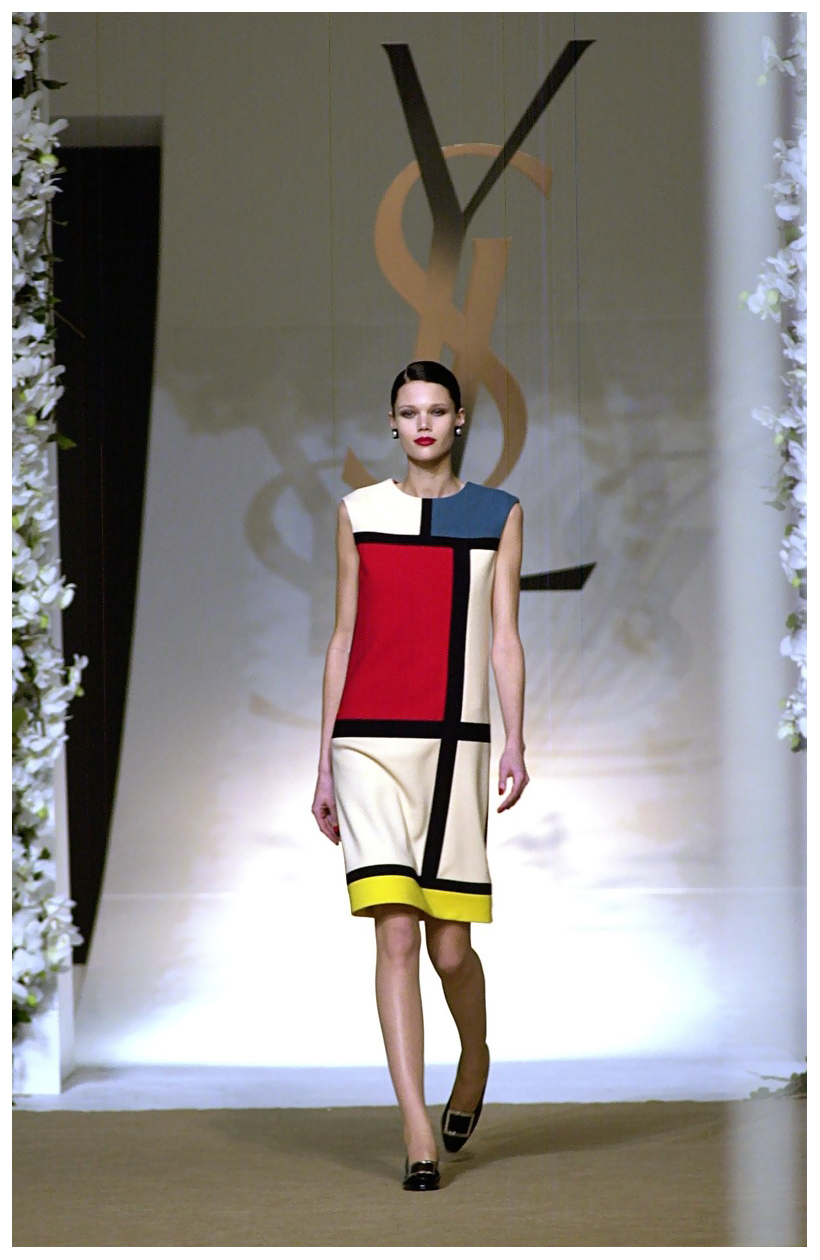As it commonly known art and fashion design are having a longstanding relationship for a while now at least since 1855, year in which designers started to actively collaborate with artists. The fruits of this collaboration are to be considered no less than masterpieces. Their legacy still resonates today in the works of both contemporary artists and fashion designers.
Before 1855 what we call fashion design today was called costume design. The Oxford Dictionary defines fashion as “a popular or the latest style of clothing, hair, decoration or behavior”. Popular is the key word as Kazimir Malevich said art freed itself from the purpose of serving and started existing “in and for itself”, hence for everybody. The artists that started this revolution were not of the common ones: they were avant-gardists. D’Avant-gard were named all those bold, extremist, innovative and rule-breaking movements that re-shaped the whole concept of art. Thanks to the rise of post-modernism art became more dynamic, liveable and it could be said wearable. As an example Peggy Guggenheim, art collector and fashion icon was known for wearing jewelry from modern and surrealist artists.
From Hermes to YSL and even Nike, Piet Mondrian never stopped inspiring fashion designers. In the 1930s Hermes designer Lola Prusac looked at Mondrians neoplasticism to sketch her clothes. Inspired by Cubism “De stijl” movement is characterized by blocks of primary colours on a white base with straight black lines. The simplicity of the style, which provided an appearance of elegance and audaciousness, made YSL 1965 Fall Mondrian Collection one of the brand’s most successful collection winning the game with its cocktail dresses. Later on many other designers took inspiration from Mondrian’s neoplasticism; Francesco Maria Bandini in 1991 and Nike 2008 Mondrian Collection Trainers are just few examples.
As far as regards collaborations, the one between the Italian Elsa Schiaparelli and the bizarre Salvador Dali. The former is considered to be one of the pioneers of fashion between the two world wars together with Coco Chanel. The latter is the outstanding controversial painter pioneer of the Surrealism. The aim of Surrealism was to explore the darkest sides of human subconscious and drag the spectators into controversial and uncanny dreams. Their worlds might seem too apart one from the other, au contraire: they made the perfect match. Mixing together their styles they achieved the result of communicate extreme elegance wrapped in an unease atmosphere. Their most famous piece is “the lobster dress”, designed by Dali for Wallis Simpson, Duchess of Windsor an object of desire, as it is the lobster in the artist’s symbolism.
Gustav Klimt was an Austrian symbolist painter. His art still is a source of inspiration for modern artists and fashion designers, but at the same time he took inspiration from fashion designers and fashion icons. Indeed, his muses were Emilie Flöge, fashion designer and businesswoman and Adele Bloch-Bauer, one of the most fashionable women of that period. It’s possible to recognize their faces in Klimt’s most famous paintings like: “Judith I” and mjfrufgq3ow. Modern fashion designers paid homage to the Austrian painter creating pieces filled with gold and square shapes and bright colours on shiny textures. In 2011 Aquilano Raimondi and in 2013 Wren Scott created collection over Klimt’s legacy. The first one took the artist’s “golden period” as a model for the prints of the clothes, while the second reproduced his most famous paintings on clothes delivering a heavy but extremely fascinating feeling of decadence. At the end they both succeeded in transmitting the elegance and nostalgia of the dearest Golden Age.
Author: Shamira Venturini




